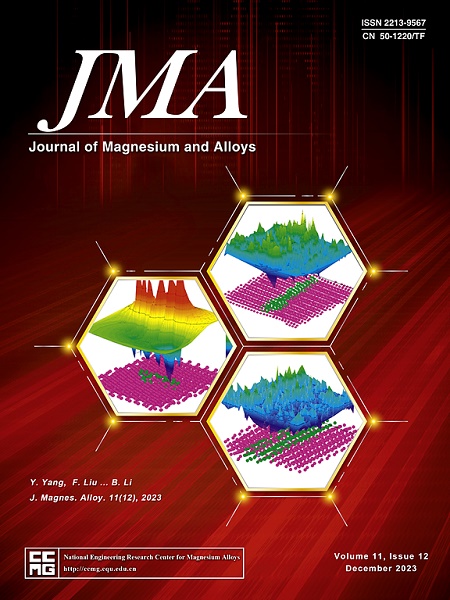MnS/MnO heterostructures with dual ion defects for high-performance aqueous magnesium ion capacitors
IF 15.8
1区 材料科学
Q1 METALLURGY & METALLURGICAL ENGINEERING
引用次数: 0
Abstract
The advancement of aqueous magnesium ion energy storage devices encounters limitations due to the substantial hydration radius of magnesium ions (Mg2+) and their strong electrostatic interaction with the primary material. Consequently, this study successfully developed a MnS/MnO heterostructure through a straightforward hydrothermal and annealing method, marking its initial application in aqueous magnesium ion capacitors (AMICs). The fabricated MnS/MnO heterostructure, characterized by S defects, also generates Mn defects via in-situ initiation of early electrochemical processes. This unique dual ion defects MnS/MnO heterostructure (DID-MnS/MnO) enables the transformation of MnS and MnO, initially not highly active electrochemically for Mg2+, into cathode materials exhibiting high electrochemical activity and superior performance. Moreover, DID-MnS/MnO enhances conductivity, improves the kinetics of surface redox reactions, and increases the diffusion rate of Mg2+. Furthermore, this study introduces a dual energy storage mechanism for DID-MnS/MnO, which, in conjunction with dual ion defects, offers additional active sites for Mg2+ insertion/deinsertion in the host material, mitigating volume expansion and structural degradation during repeated charge-discharge cycles, thereby significantly enhancing cycling reversibility. As anticipated, using a three-electrode system, the developed DID-MnS/MnO demonstrated a discharge specific capacity of 237.9 mAh/g at a current density of 0.1 A/g. Remarkably, the constructed AMIC maintained a capacity retention rate of 94.3% after 10000 cycles at a current density of 1.0 A/g, with a specific capacitance of 165.7 F/g. Hence, DID-MnS/MnO offers insightful perspectives for designing alternative clean energy sources and is expected to contribute significantly to the advancement of the clean energy sector.

用于高性能水性镁离子电容器的具有双离子缺陷的 MnS/MnO 异质结构
本文章由计算机程序翻译,如有差异,请以英文原文为准。
求助全文
约1分钟内获得全文
求助全文
来源期刊

Journal of Magnesium and Alloys
Engineering-Mechanics of Materials
CiteScore
20.20
自引率
14.80%
发文量
52
审稿时长
59 days
期刊介绍:
The Journal of Magnesium and Alloys serves as a global platform for both theoretical and experimental studies in magnesium science and engineering. It welcomes submissions investigating various scientific and engineering factors impacting the metallurgy, processing, microstructure, properties, and applications of magnesium and alloys. The journal covers all aspects of magnesium and alloy research, including raw materials, alloy casting, extrusion and deformation, corrosion and surface treatment, joining and machining, simulation and modeling, microstructure evolution and mechanical properties, new alloy development, magnesium-based composites, bio-materials and energy materials, applications, and recycling.
 求助内容:
求助内容: 应助结果提醒方式:
应助结果提醒方式:


